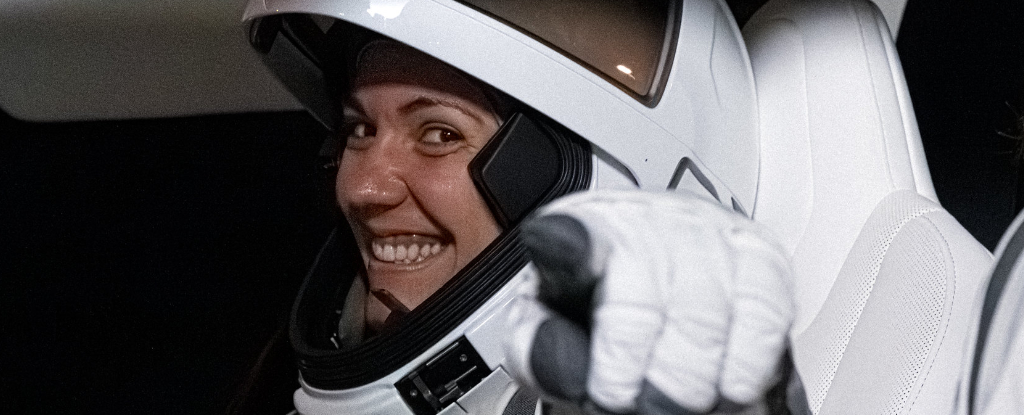After multiple delays, SpaceX looks likely to finally launch a four-person crew on the Polaris Dawn mission in just a few hours, and we can’t wait to see the live action.
This spaceflight is a huge milestone. If all goes according to plan, Polaris Dawn will travel farther from Earth than any human has in more than 50 years since the Apollo missions wrapped in the 1970s.
Even more exciting are plans for the first private spacewalk.
The Dragon spacecraft aims to reach a peak altitude of more than 1400 kilometers (about 870 miles) above Earth. That’s more than twice the average altitude the International Space Station keeps while completing its 15.5 orbits of our planet each day.
A 4-hour window for launch begins at 07:38 UTC (03:38 ET) on Tuesday, September 10, with two more opportunities at 09:23 UTC and 11:09 UTC.
You can watch the live coverage from NASA’s Kennedy Space Center here.
Watch live as Falcon 9 launches the @PolarisProgram’s Polaris Dawn crew on a multi-day mission orbiting Earth https://t.co/u1KqQx5AFr
— SpaceX (@SpaceX) September 10, 2024
A helium leak delayed the mission last month, along with unfavorable weather conditions along Florida’s coast where Dragon will splash down after returning from space.
Then another SpaceX Falcon 9 mission lost its first stage booster, temporarily grounding the launch vehicle NASA and private companies use to launch astronauts and satellites into orbit.
SpaceX says the weather is 40 percent favorable, so fingers crossed for the team! There are backup launch opportunities available on Wednesday, too.
Good L-8 hour weather brief: The Polaris Dawn crew is ready to step into suit-up and launch operations for liftoff early tomorrow morning https://t.co/8LYMWe4Gm8 pic.twitter.com/lW2gFenPbH
— Polaris (@PolarisProgram) September 10, 2024
Along with pilot Scott Poteet, SpaceX space operations engineer Sarah Gillis, and SpaceX medical officer Anna Menon, the crew is led by billionaire Jared Isaacman, who in 2021 was the commander of SpaceX’s Inspiration4, the first all-civilian spaceflight.
The team will conduct 36 experiments during their five days on orbit, including testing Starlink laser-based communications and studying the effects of space on the human body.
The Polaris Dawn crew will wear smart contact lenses in space to monitor their intraocular pressure, in efforts to learn more about Spaceflight Associated Neuroocular Syndrome, or SANS, as part of a University of Colorado Boulder research experiment.
This is just one of 36… pic.twitter.com/QoTJsjOSzc
— John Kraus (@johnkrausphotos) August 21, 2024
While Gillis and Isaacman undertake the first-ever civilian spacewalk, the entire Polaris Dawn crew will be exposed to the vacuum of space, putting SpaceX’s new enhanced spacesuit design to the test.
Though none of the team are professional astronauts, they have undertaken more than two years of rigorous preparation for the mission, including skydiving, centrifuge and altitude training, simulations, medical training, and familiarization with the spacesuits in a vacuum environment.
Polaris Dawn is the first of three planned missions by the Polaris Program, described as “a first-of-its-kind effort to rapidly advance human spaceflight capabilities while continuing to raise funds and awareness for important causes on Earth.”
Perhaps the most wholesome part of this amazing spaceflight will be Menon conducting a reading of her book, Kisses from Space, that she wrote to share her experience with her two young children. Funds from the book’s sales will go to a children’s research hospital.





